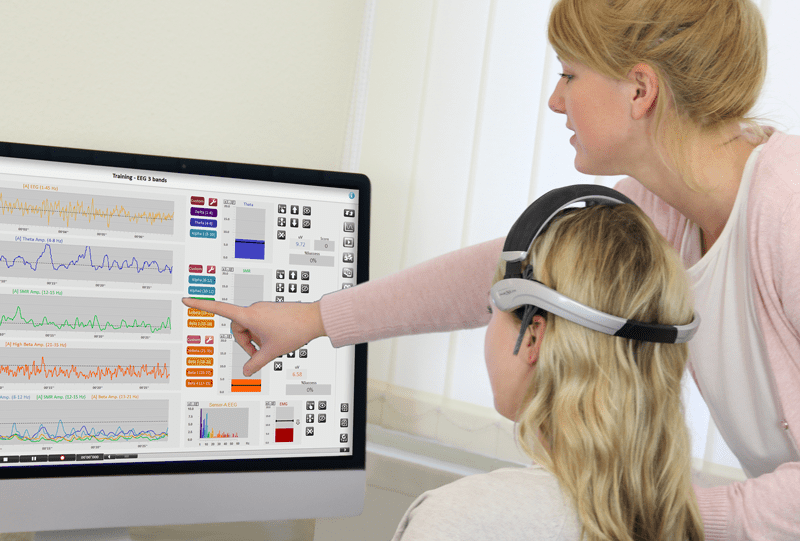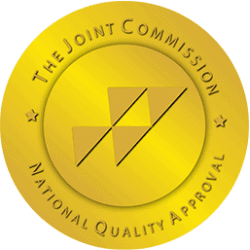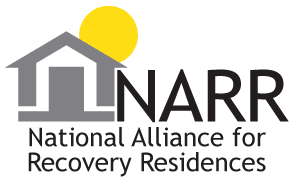Anxiety in Teens Leading to Substance Abuse
Anxiety, a prevalent mental health concern among adolescents, often manifests as an excessive fear or apprehension regarding everyday situations. It is not uncommon for neurobiological changes during puberty to exacerbate feelings of anxiety in teenagers, leading them to seek relief through various means, including substance use. This post delves into the complex relationship between anxiety and drug use among teenagers, highlighting the psychological, social, and environmental factors that contribute to this phenomenon.
Psychological Factors
Firstly, it is crucial to understand the psychological dimensions of anxiety that prompt teens to turn to drugs. Anxiety can be particularly debilitating during adolescence, a period marked by significant emotional turmoil and identity exploration. Increased academic pressures, social dynamics, and expectations from peers and family can heighten anxiety levels. As a maladaptive coping mechanism, many adolescents resort to drugs to alleviate these overwhelming feelings. Substances such as alcohol, marijuana, and other illicit drugs may provide temporary relief from anxiety, leading adolescents to associate drug use with emotional respite.
Research indicates that substance use can also produce immediate effects that mimic relief from anxiety symptoms. For instance, alcohol is a depressant that lowers inhibitions and promotes feelings of euphoria, thus providing a false sense of security and calm. However, this initial relief is misleading; the subsequent withdrawal symptoms and potential for addiction can exacerbate underlying anxiety in the long run, creating a vicious cycle where substance use becomes a primary means of coping.
Social Influences
The social environment in which adolescents reside plays a significant role in shaping their propensity for both anxiety and substance use. Peer pressure is a powerful force during adolescence, and the desire for acceptance can lead individuals to experiment with drugs as a means of fitting in or as an escape from anxiety-inducing social interactions. For teens struggling with social anxiety, the prospect of using substances to alleviate discomfort in social settings can be particularly compelling. The normalization of drug use within certain peer groups further perpetuates this cycle, making it difficult for anxious adolescents to seek alternative, healthier coping mechanisms.
Moreover, familial factors can significantly influence a teenager’s likelihood of using drugs. Adolescents raised in households where substance use is prevalent or where parental figures exhibit high levels of stress may internalize these behaviors as a normative response to anxiety. This modeling can lead to the adoption of similar coping strategies, reinforcing the connection between anxiety and drug use. Furthermore, lack of parental support and communication can exacerbate feelings of isolation and anxiety, leading teens to turn to friends and drugs for solace.
Environmental Context
The broader environmental context also plays a pivotal role in shaping the relationship between anxiety and substance use among teenagers. Economic hardship, exposure to violence, or unstable living situations can contribute significantly to heightened levels of anxiety in young people. These adverse conditions can create a sense of hopelessness and despair, leading adolescents to seek escapism through drugs. For instance, the prevalence of drug availability in disadvantaged communities can create an environment where substance use is not only normalized but also seen as an accessible option for coping with stressors.
Additionally, the digital age has introduced new dimensions to the adolescent experience. Social media can be both a source of connection and a catalyst for anxiety, with constant comparisons to others and exposure to idealized lifestyles contributing to feelings of inadequacy. This digital landscape may push teens toward substance use as a means of managing their anxiety and navigating the pressures of modern social interactions. The transient nature of online engagements can exacerbate feelings of loneliness and anxiety, leading to increased substance use as a coping strategy.
What Causes Anxiety in Teens?
Anxiety has emerged as a significant mental health concern for adolescents in contemporary society. The World Health Organization identifies anxiety disorders as one of the most prevalent mental health issues affecting young people, and a growing body of research acknowledges the pressing need to understand the underlying causes of anxiety in this demographic. The following explores the multifaceted causes of anxiety in teens, emphasizing biological factors, social influences, academic pressures, and technological impacts.
Biological Factors
The adolescent brain undergoes considerable transformation, making it particularly susceptible to anxiety disorders. Neurodevelopmental changes contribute to emotional dysregulation and heightened sensitivity to stressors. During puberty, hormonal changes, particularly in sex hormones like estrogen and testosterone, can influence mood and emotion. Research has indicated that genetic predispositions also play a crucial role in the development of anxiety disorders. A family history of anxiety or other mental health conditions significantly increases the likelihood of teens experiencing similar challenges. These biological underpinnings form a significant foundation upon which environmental and social factors interact, potentially exacerbating anxiety symptoms.
Social Influences
The social environment in which adolescents grow up can significantly impact their mental health. Peer relationships during adolescence are pivotal; the desire for acceptance and fear of rejection can induce considerable anxiety. Teenagers are often subjected to social comparison due to the need to affirm their social status, which can exacerbate feelings of inadequacy and anxiety. Additionally, bullying—whether in person or online—stands out as a formidable source of distress for many adolescents, leading to chronic anxiety symptoms.
Moreover, family dynamics significantly shape an adolescent’s psychological landscape. High levels of familial conflict, parental mental health issues, or unrealistic expectations from parents can make teens feel overwhelmed and anxious. A nurturing and supportive family environment can foster resilience, whereas an unstable or dysfunctional home life may contribute to heightened anxiety. Consequently, understanding the social fabric in which teens exist is essential for identifying and addressing anxiety-related issues.
Academic Pressures
In today’s competitive educational landscape, academic performance has become a considerable stressor for adolescents. The increasing emphasis on grades, standardized testing, and college admissions can create an overwhelming sense of pressure among teenagers. Many feel that their self-worth is tied to their academic achievements, fostering a fear of failure that can lead to anxiety. The competitive nature of modern education, marked by a relentless pursuit of excellence, can generate significant performance anxiety, thereby impacting both mental and physical well-being.
Furthermore, the rise of extracurricular activities intended to bolster college applications has only compounded this issue. Teens are frequently encouraged to balance academics with sports, clubs, and volunteer opportunities, leading to packed schedules and little time for relaxation. Such demands can interfere with healthy coping mechanisms and self-care practices, ultimately fostering a breeding ground for anxiety.
Technological Impacts
The advent of technology has dramatically altered the social landscape for adolescents, introducing both positive and negative dimensions to their lives. While technology facilitates connection and communication, it also exposes teens to a range of stressors. Social media platforms, popular among young people, can amplify feelings of inadequacy and anxiety due to unrealistic portrayals of peers’ lives. The constant feedback loop of likes and comments can lead to an unhealthy dependence on external validation, negatively impacting self-esteem and mental health.
Furthermore, the omnipresence of digital communication can blur boundaries between personal and public life. Teens may feel compelled to be always ‘on,’ leading to chronic stress and anxiety. Cyberbullying, a contemporary offshoot of traditional bullying, increases the vulnerability of teens to anxiety as they navigate hostile online environments. Thus, while technology can serve as a source of support and connection, its potential for harm cannot be underestimated.
Anxiety in adolescents is a complex issue influenced by a confluence of biological, social, academic, and technological factors. Understanding these multifaceted causes is crucial for developing effective strategies for prevention and intervention. As society continues to grapple with the mental health challenges faced by young people, it remains imperative to foster supportive environments that address the specific stressors contributing to anxiety. By understanding and mitigating these influences, we can work towards promoting well-being and resilience among today’s teens, ultimately contributing to a healthier, more balanced future generation.
What Drugs are Teens Using to Cope with their Anxiety?
In recent years, the mental health crisis among adolescents has intensified, with anxiety disorders emerging as one of the prevalent issues. According to the National Institute of Mental Health, approximately 31.9% of adolescents experience an anxiety disorder at some point in their lives. As anxiety levels rise, many teenagers are resorting to various substances as coping mechanisms. Here we explore the types of drugs that teens are using to deal with anxiety and the implications of these choices on their health and development.
To begin with, it is essential to understand the various substances that teenagers commonly use for relief from anxiety. Among the most popular are alcohol, marijuana, prescription medications, and illicit drugs. Each of these substances interacts with the brain in unique ways, providing temporary relief from anxiety but potentially leading to more severe emotional and physical consequences.
1. Alcohol
Alcohol is one of the most widely used substances among teenagers seeking to alleviate anxiety. The calming effects of ethanol make it a tempting option for adolescents who are grappling with stress and social pressures. Some teens believe that consuming alcohol can reduce their social anxiety and enhance their confidence in social scenarios. However, while alcohol may provide an initial sense of relaxation, it often exacerbates anxiety in the long term. Regular use can develop into dependency, with adolescents facing withdrawal symptoms that include heightened anxiety.
2. Marijuana
Another substance of choice among teens is marijuana. The active ingredient in marijuana, delta-9-tetrahydrocannabinol (THC), is known for its psychoactive properties and is often perceived as a natural remedy for anxiety. Research indicates that some users experience short-term relief from anxiety and stress when using marijuana. However, the long-term consequences can be damaging. Frequent use may result in cognitive impairments, emotional instability, and increased anxiety in the absence of the drug. Moreover, the perception of marijuana as harmless among teens can lead to its abuse, further complicating their mental health issues.
3. Prescription Medications
In addition to illicit drugs, many teenagers misuse prescription medications, particularly benzodiazepines and stimulants. Benzodiazepines, such as Xanax and Klonopin, are prescribed to treat anxiety disorders but are often misused for their sedative effects. Teens may acquire these medications illegally or through friends, believing that they provide a quick fix for overwhelming anxiety. However, misuse of benzodiazepines carries significant risks, including addiction, overdose, and withdrawal symptoms that can worsen anxiety. Stimulants, often prescribed for attention deficit hyperactivity disorder (ADHD), are sometimes used by teens to cope with anxiety, as they temporarily enhance focus and elevate mood. However, misuse can lead to increased anxiety, insomnia, and cardiovascular issues.
4. Illicit Drugs
Lastly, various illicit drugs, such as opioids and hallucinogens, are also utilized by some teens as a means to cope with anxiety. Opioids can offer temporary physical and emotional relief, but they pose a high risk of addiction and overdose. Meanwhile, hallucinogens like LSD or psilocybin mushrooms are sometimes chosen for their ability to provide an “escape” from reality, albeit through unpredictable experiences that may increase anxiety levels post-use, along with adverse psychological effects.
Implications and Conclusion
The choice to use drugs as a coping mechanism for anxiety among adolescents has profound implications, both for their immediate well-being and their long-term health. Substance use can interfere with the development of healthy coping strategies, impair academic performance, and strain relationships with family and peers. Moreover, reliance on substances can create a dangerously cyclical pattern where the temporary relief from anxiety leads to dependency, ultimately exacerbating the original issue and creating a cascade of additional problems.
The trend of substance use among teenagers as a coping mechanism for anxiety highlights a significant public health concern. It is crucial for parents, educators, and mental health professionals to foster an environment where open discussions about anxiety and substance use can occur. By providing education, support, and alternative coping mechanisms, society can help mitigate the reliance on substances and promote healthier approaches to managing anxiety. Addressing these issues holistically is essential to support the mental health of adolescents and guide them toward healthier, more effective coping strategies.
Ambrosia Behavioral Health’s Treatment for Adolescent Mental Health and Addiction

The Adolescent Mental Health Landscape
Adolescents face a myriad of challenges, including academic pressures, social dynamics, and familial expectations, often culminating in mental health issues such as anxiety, depression, and behavioral disorders. Concurrently, experimentation with substances is prevalent, leading some adolescents to develop addiction. Understanding this intersectionality is crucial in formulating treatment programs that are not only responsive to mental health needs but also preventative against substance abuse.
Comprehensive Assessment and Individualized Care
Ambrosia Behavioral Health begins its treatment process with a thorough assessment that considers the physiological, psychological, and emotional dimensions of the adolescent’s health. This initial evaluation is essential in establishing a personalized treatment plan tailored to each individual’s unique circumstances. By recognizing that no two adolescents are alike, Ambrosia emphasizes a holistic approach that incorporates medical history, environmental factors, and underlying issues contributing to mental health and addiction struggles.
Therapeutic Modalities
At the core of Ambrosia’s treatment programs for adolescents are evidence-based therapeutic modalities. Among these, Cognitive Behavioral Therapy (CBT) is prominently featured. CBT equips adolescents with the tools to identify and challenge negative thought patterns, thereby fostering healthier responses to stressors and reducing the likelihood of substance misuse. This cognitive restructuring is particularly vital in creating a supportive therapeutic environment where adolescents can develop resilience and coping strategies.
Additionally, Dialectical Behavior Therapy (DBT) is employed to enhance emotional regulation, interpersonal effectiveness, and distress tolerance. The incorporation of these therapeutic modalities reflects Ambrosia’s commitment to utilizing techniques that not only address existing issues but also empower adolescents with skills that will benefit them throughout their lives.
Integrative Approaches and Family Involvement
Ambrosia Behavioral Health recognizes the importance of family dynamics in the recovery process. To this end, family therapy is incorporated into treatment programs, promoting open communication and understanding within the familial context. This integrative approach aids in addressing systemic issues that may contribute to the adolescent’s mental health and addiction struggles. Involving family members in the recovery process fosters a more supportive home environment, crucial for sustained recovery.
Furthermore, Ambrosia offers holistic therapies such as mindfulness practices, art therapy, and recreational therapies. These complementary modalities serve to enhance traditional therapeutic approaches, enabling adolescents to express themselves creatively and engage in activities that promote self-esteem and self-worth. Such diverse treatment options acknowledge the varied interests and needs of adolescents, thereby increasing the likelihood of engagement and overall success in the treatment process.
Aftercare and Continuity of Care
An essential component of effective treatment is aftercare planning. Ambrosia Behavioral Health emphasizes the importance of continuity of care through structured aftercare programs designed to support adolescents as they transition back into their daily lives. This may involve ongoing therapy sessions, support groups, and collaboration with educational institutions to ensure that the adolescent receives the necessary support to navigate challenges post-treatment.
This focus on aftercare not only assists in mitigating the risk of relapse but also empowers adolescents to maintain their mental health and sobriety, instilling in them a sense of agency and responsibility for their own well-being.
Ambrosia Behavioral Health’s treatment for adolescent mental health and addiction is characterized by its comprehensive, individualized, and integrative approach. By combining evidence-based therapies with family involvement, holistic practices, and a strong aftercare framework, Ambrosia addresses the complex needs of adolescents in a manner that fosters resilience and recovery. As mental health issues continue to rise among youth, organizations like Ambrosia play a crucial role in offering hope, healing, and a pathway toward healthier futures for adolescents and their families.
Ambrosia’s Academy for Adolescent Mental Health and Addiction Treatment
In Conclusion
In conclusion, the interplay between anxiety and adolescent substance use is complex and multifaceted. Psychological factors, social influences, and environmental contexts converge to create an environment where drug use may be perceived as an effective coping mechanism for managing anxiety. Understanding these dynamics is crucial for developing effective interventions that address both anxiety and substance use among teenagers. By promoting healthier coping strategies and fostering supportive environments, society can work toward mitigating the impact of anxiety on adolescent substance use. This multifaceted approach is essential in guiding adolescents toward healthier, more constructive pathways for managing their mental health.
Ambrosia stands at the cutting edge of mental health and addiction treatment. Since 2007 Ambrosia has been the nation’s leader in adult and adolescent behavioral healthcare maintaining a strong focus on neuroscience and research fueling their advanced treatment methods. If you or someone you know is struggling reach out today and we will provide you with exemplary customer service and a truly effective treatment experience.


















